Military and Civilian Settlers

Source: ‘From the Eastern Borderlands of the Republic of Poland – Memories from Military Settlements 1921 – 1940’
The military settlement of the Eastern Borderlands has a lasting place in the history of the Second Republic, even though it only included some 9000 soldiers who actually fought for independence during the 1914-1920 period. The notion to settle the Kresy region in this manner arose in the heated days of August 1920 and was passed into Law by the Polish Parliament on December 17th of that year. However it was soon subjected to severe criticism from both within the Parliament and the Press. The criticism originated from groups who felt that their political and economic interests were being threatened by the presence of the Pilsudski-supported military settlements. Within two years, in March 1923, further expansion of military settlements was suspended.
In the early years, the living conditions of the settlers were extremely difficult. The land they had been allocated was often overgrown and spoiled by the military action of the preceding years, buildings were neglected, there was a lack of basic farming tools and machinery, and of course the former soldiers had little money in their pockets to improve matters.
With the passage of time the settlers’ situation improved gradually. During the 1930s the Press commented very favourably, and often very enthusiastically, on the achievements made by the settlers and the positive role they fulfilled in the Eastern Borderlands. There, in the eastern part of the country, where different nationalities lived as if in a crucible: Polish, Ukrainian, White Russian, Jewish, as well as a number of smaller minorities, the settlers were able to live well and on friendly terms with the indigenous population, without generating an atmosphere of the ‘Polish Lord’, the ‘Ukrainian peasant’ or ‘White Russian’ peasant.
Toward the end of the 1920s, in addition to military-based settlements (where former soldiers were awarded land free of charge), civilians also began to settle in the Eastern Borderlands where they were able to purchase land at lesser prices than in other parts of Poland.
READ ON …
Janina Stobniak-Smogorzewska
Osada Krechowiecka, Wołyń
Military Settlement in the Eastern Borderlands
During the Second Polish Republic, the history of the military settlement in the Eastern Borderlands is defined by two dates: December 17th, 1920 when the Parliament passed a law allowing former soldiers to be given land, and February 10th, 1940 the tragic day when the Soviet deportations of the settlers and their families to Siberia began.
These 19 years were very creative for the settlers, who as young enthusiastic soldiers started building their existence on the empty fields of these borderlands, and they left these lands as fathers of families who had accomplished much in terms of farming and community life. Their lives were difficult, but they were filled with joy and a soldier’s fantasy. Their presence in the borderlands was mostly noted by the farming progress they made, and this was a bridge to better relations with the locals. Their duty was to spread advances in farming and cultures in the area, often referred to as “Poland B”, and provide an example to the locals in order to assist their transition to Polish-ness.
Beginnings
At the end pf hostilities soldiers, who serve at the front or as volunteers, will be first in line to receive land from the government…. Especially soldiers who distinguish themselves – they will receive land for free… This announcement was included in the proclamation of the President of the Council of Ministers, Vincent Witosa, on August 7th, 1920 as he called for the fight against the Bolshevik invaders. Four months later, on December 17th, 1920 with the hostilities now over, but with the peace agreement yet to be signed, the Parliament passed two important laws: regarding the acquisition of land in the north-eastern districts of the Second Republic, (the farthest north being Vilnius district, and the farthest south being Wolyn district) as well as regarding the gifting of land to soldiers of the Polish army in the territory covered by the previous law.
The reforms regarding the settlers involved lands belonging to the Russian Treasury or Russian institutions before the war, or in private Polish or Russian hands, as well as abandoned, uncultivated lands. In the debates that took place in the Sejm, it was mentioned that cultivating these lands would be very difficult as they were mostly overgrown, and there was some urgency in getting this done in order to meet the provisioning needs of the country.
District Committees were formed in order to coordinate the land reform and dole out the parcels of land to the soldiers. The chairman was to be the district governor, and the members would represent the Ministry of Agriculture, State Treasury, Military Affairs, and land reform officials. The regulations that were to be followed by these committees meant that the Committees had the responsibility to grant the land parcels to the locals, which was usually ignored in practice, and became one of the reasons that people were against the settlers’ act.
The most active Ministry involved with the settlers was the Ministry of Military Affairs, which opened a section called Military Settlers Division: the Qualification Commission reviewed the soldiers’ applications and the Office of Settlers involved themselves with settlement matters in all regions. In early spring of 1921 the first groups of soldiers who were to form communal farming settlements, arrived in the Borderlands. In the most difficult of circumstances they began their settlers’ lives. Their home regiments equipped them with horses and rolling Stock, where possible. In terms of government aid, each settler was given 80 cubic meters of building wood, along with a credit of 2 billion marks for the entirety of the settlements. In reality, actually receiving the amount of wood and credit from local authorities was a different story. The settlers did not have any monetary resources of their own – their wealth lay in their energy, enthusiasm, solid character, and the experiences of the war. These characteristics were not entirely sufficient, and progress on the settlements was very slow. The assigning of land was carried out in a chaotic fashion. There were also instances of violations of law by the settlers, and arbitrariness on the part of officials.
This was the result of a lack of proper planning, the rush to put the law into effect, and the lack of trust between local officials, settlers and the military.
Criticisms of the settlement policy grew by the end of 1921, particularly in the Press and in Parliament. In May 1922, then Premier Witos admitted that …. if we remove government aid from the settlers, aid that was promised them and on which they are counting, then the government will not be free from blame. In general, the critics were very vocal, but rarely were they willing to examine why things were not going well.
Local organizations were the most critical of the settlers; threatened by land reforms and the grouping of minorities, they treated settlers like intruders on their territories, which they felt should belong to the Byelorussian and Ukrainian farmers.
The fact that land was also supposed to be parcelled out to the locals was something that all leftist organizations underscored, as did the settlers themselves. Juliusz Poniatowski said the following in Parliament:…the settlers’ view is very interesting in this case. Whenever they have the opportunity to speak, they demand that the local authorities parcel out land to the local population. We sent these people to the Borderlands, not on a political mission, but a cultural and economic one. These settlers have the opportunity to create significant relations with their neighbours. . Political parties were also reluctant to support the settlements because of their link with Marshal Pilsudski. Thus the settlements lost Parliamentary and government support and on March 24th,1923, Parliament adopted a resolution calling on the government to stop seizing land for the purpose of establishing new military settlements.
From the onset of the settlements to the end of 1923, 133,146 hectares of land. Under the Act of March 1932 there was a reclassification of a number of civilian settlers who had to pay for land while the military were entitled to it free. According to official data, on 1 November 1933 there were 8,988 settlers and over the next year that number changed only minimally. In 1931-32, the geographical distribution of settlers was as follows:
| Region Poleski | 1133 settlers | 13,6 % of total |
| Region Grodzieńsko-Nowogródzki | 2415 settlers | 28,9 % of total |
| Region Wileński | 1149 settlers | 13,7 % of total |
| Region Wołyński | 3658 settlers | 43,8 % of total |
| Wołyń płd. | (3088 settlers) | (37,0 % of total) |
| Total | 8355 settlers | 100,0 % |
The total land area of each settlement depended on the quality of the soil, but under the law, the maximum could not exceed 45 hectares. These represented settlements granted for educational purposes. Of the 8355 settlements, 34% had lot sizes of 10-15 hectares, 26% had lot sizes of 1915 to 1920 hectares, and 6.8% had lot sizes of less than 10 hectares. Most of the smallest plot sizes were located in the southern part of Wolyn region, while in the Grodzieńsko-Nowogródzki and Vilnius regions most plot sizes were 1915 to 1925 hectares, and in the Polesie region where land was poor, the lot sizes were as large as 1920 to 1930 hectares.
Critics of the settlements stressed the fact that the military settlers did not know what they were doing as they had no experience working the land, and that this was the reason for the low yield on the settlements. However, according to the statistics of the Settlers’ Union, of 7918 settlers, 70.3 % were farmers, 6.9 % were craftsmen, 7.1 % were officials, 6.6 % were students who had joined the army, and 9.1 % were from other professions.
In terms of military rank, 42.3% were non-commissioned officers, 11.9% were lower level officers, 3.9% mid-level officers, and 1.2% were Generals. Also, 39.5% had been wounded, 43.2% had been awarded Virtuti Militari Crosses of Valor medals, and 9.5% had been awarded Virtuti Militari Knights medals.
Other than receiving land free of charge, military settlers received little in terms of financial assistance. The law of 17 December 1920, provided for a loan of 2 billion marks for the entirely of the settlements, but receiving any of these funds was a very slow process, and with monetary values falling steadily after Independence, this total amount was never distributed.
In the first years of the settlements, the situation was almost desperate. Settlers received a bare field with no buildings, and they lacked the necessary agricultural tools. They settled in various ways – in old manor houses in neighbouring towns and villages, and many of them lived in dugouts. Contact with the outside world was difficult, because the distance to the nearest post office or train station was 20 miles or more, with access often being nearly impossible. In spring and autumn they sank in the mud roads, in winter the snow prevented them from venturing far from their property. Help from the local authorities was often granted reluctantly and hesitantly. In the autumn of 1922, over 40% of the settlers did not produce crops. The worst case involved building. Receipts for timber, guaranteed by the Law, were issued late, and forestry officials refused to fill the orders. Moreover, many allowances were given for woods that were far away from the settlement. In the end, the system of paying compensation for timber proved to be highly detrimental to the settlers.
The settlers began to doubt that they had taken the right decision, and this produced a depressing atmosphere. Finally, in April 1923 Parliament allowed reduced credit for military and civilian settlements in the amount of 50 billion marks. This represented less than half the sum needed to cover the most urgent need. In the following years, credits with low interest rates that were granted turned out to be insufficient, so the settlers borrowed money from all possible sources and under much more difficult conditions of repayment.
In 1922 it became a matter of legalizing the possession of land by settlers, but despite constant pressure from the Association of settlers, and the settlers themselves, this continued unchanged until 1926. Commissions appointed for this purpose, examines the state of the farm settlements and decided whether chane of possession could be enacted or whether it should be delayed until significant improvement of the land took place. “AKt Nadawcy” was an important document for the settler, as it put the deed of the land in his name. This led to increased investment on the part of the settlers, and the making of long-term farming decisions.
As of 1 January 1929 the average value of the assets of each settler was assessed at 10,967 PLN, and after deducting the various commitments in the amount of 3188 PLN, the balance of 7779 PLN equaled the relevant achievements of the settler. From 1928-32 the average productivity of wheat on the settlements was 10 quintals per hectare. ….
In the mid-1930s, there was a measure of economic recovery and the situation of the settlements began to slowly improve. A big obstacle to further development, however, was the serious level of debt in the various banks and financial institutions. Bailiffs harassed the settlers for defaulting not only on the debt, but even on the interest. It became clear that without state aid the settlers would be jeopardized. Between 1933-1935, almost all the settlers debts – like other small farmers – were amalgamated into one loan from the land reform fund, thus reducing the loans by 50% and spreading the repayment over 60 years at a reduced. Despite these apparently favourable conditions over the coming years many of the settlers were not able to pay instalments of loans and were threatened with the auction of their plots. In early 1939, the Supreme Council of the Union of Settlers put forward a demand to reduce the interest on loans up to 1%, arguing that “settling in the eastern territories can not be economically weak, because then it will not be able to perform tasks and duties incumbent on them by the settlement law.
In the second half of the thirties, clear economic differences emerged between the settlers in Volhynia, and those in Polesie and Vilnius region. The improved results were related to the rich farmland of Volhynia than could be obtained on the muddy or poor soils in the northern provinces. Volyn settlements were generally well managed, with decent buildings, most of them were equipped with basic agricultural machinery, such as seeders, harvester, or machinery for the preparation of feed. The widespread use of fertilizer has been carefully selected to optimize grains and seeds. They also carefully selected cow breeds (i.e. the Polish Red breed) and the selection of pigs or poultry. They expanded the scope of industrial crops such as sugar beet and tobacco, giving excellent results on the fertile farmlands in Volhynia. This intensive management meant that they had to increase the workforce, so many farm settlements hired both permanent and seasonal workers.
The Vilnius region fared much worse. At the end of 1938, a series of articles in “Courier Town” announced the results of research into the military settlements of the region that was conducted by the Economic Institute of the Eastern Territories. The overall picture of settlement was pessimistic. In conclusion, the author of the article stated that only 25% of the total holdings of the settlements was a self-contained unit, while the remaining 75% “is drowning in poverty, problems, misunderstandings” and “vegetating in even worse conditions than smallholder neighbors, and local peasants.” There is no documentation on the economic situation of the settlers in the regions in the years just before the war, and therefore it is difficult to give a definite assessment of the settlements as a whole.
Living Conditions
As a separate social group, linked to its military roots, Military settlers were quite restricted. They were dealing with the difficulty of building a life in the settlements, and in a deeply patriotic way were focussed on the cultural and social mission of the Borderlands. Another thing that contributed to their separateness was their geographical isolation, because settlements were located at a distance of at least a few kilometers from villages or other towns. Settlers were also newcomers to the Borderlands, and were initially accepted with great reluctance by the local community, both Ukrainian, Belarusian as well as Polish, in particular the landowners. This led to the creation of a rather peculiar model of settlement life, which had regional differences, depending on the degree of wealth of the settlement, as well as the natural conditions.
Initially the settlements had a character of scattered farms on adjoining plots of land. The total number of military settlements approached one thousand, while the number of plots on a single settlement ranged from 2 to over 80. The names of settlements remained mostly the same as new settlers tended to assign a name associated with the parent regiment (Szwoleżerowo, Jazłowiecka) or with a prominent historical figure (Kosciuszko, Piłsudy).
Life in the settlements, especially in the early years, was not easy. Along with the economic hardship was an issue of safety, since diversionary troops, trained and armed in the Soviet Union, crossed the border at will, robbing, terrorizing and murdering people in the Borderland. This finally stopped after the establishment, in 1924, of the Border Protection Corps, which effectively abolished these attacks.
Settlement families lived in constant anxiety and with great discomfort, they worked hard for such maintenance. Settlers wives were a great help and support – they not only dealt with the children and the house, but also helped in all kinds of farm work. Above all, they had to demonstrate understanding for their fantasy men – soldiers, who continued to soldier against civil and family life.
From the outset, both the Association of settlers and farmers as well as local government agencies, stressed education programs in the area of agriculture, local government and social affairs for the settlers. They organized courses of all kinds, particularly correspondence courses in farming approaches. serving farmers throughout the country.

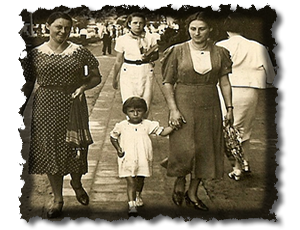
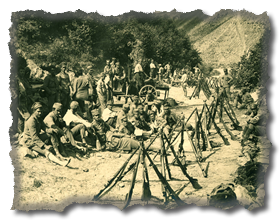
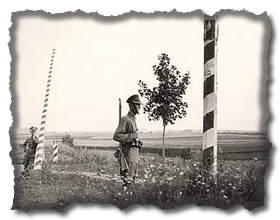

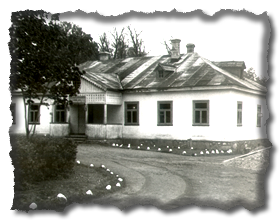
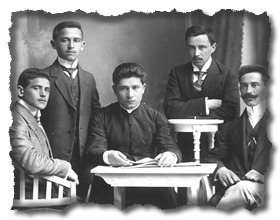
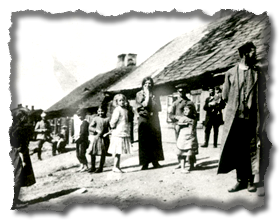
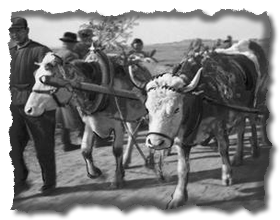
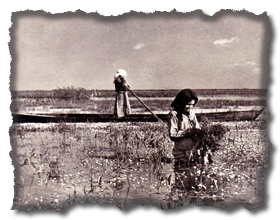
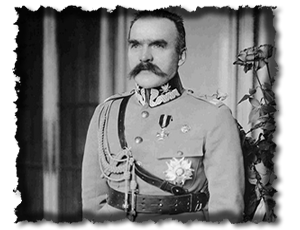 At the birth of the Second Polish Republic the Eastern Borderlands constituted a civilizational backwater compared to the western and central parts of the country. This situation become even worse after the war of 1920-21, when the civilian and industrial infrastructure spared by World War I was further destroyed, along with crops and livestock. This led to the depopulation of some of the eastern administrative units (powiats). Under such conditions the independent Polish Republic had to undertake suitable steps to consolidate the eastern regions with the rest of the Polish lands. An important issue in these Eastern Borderlands was the national minorities whose rights were guaranteed by a “little Versailles Treaty” from June of 1919. Additionally, in 1922 the Polish Parliament decided, in the autonomy statute for the provinces of Lwów, Stanisławow and Tarnopol, that their regional councils will be composed of two chambers, i.e. Polish and Ruthenian. Similarly, there was to be no Polish colonization in these provinces and a Ukrainian University was to be formed in Lwów.
At the birth of the Second Polish Republic the Eastern Borderlands constituted a civilizational backwater compared to the western and central parts of the country. This situation become even worse after the war of 1920-21, when the civilian and industrial infrastructure spared by World War I was further destroyed, along with crops and livestock. This led to the depopulation of some of the eastern administrative units (powiats). Under such conditions the independent Polish Republic had to undertake suitable steps to consolidate the eastern regions with the rest of the Polish lands. An important issue in these Eastern Borderlands was the national minorities whose rights were guaranteed by a “little Versailles Treaty” from June of 1919. Additionally, in 1922 the Polish Parliament decided, in the autonomy statute for the provinces of Lwów, Stanisławow and Tarnopol, that their regional councils will be composed of two chambers, i.e. Polish and Ruthenian. Similarly, there was to be no Polish colonization in these provinces and a Ukrainian University was to be formed in Lwów.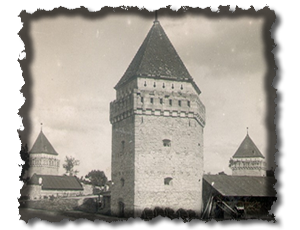
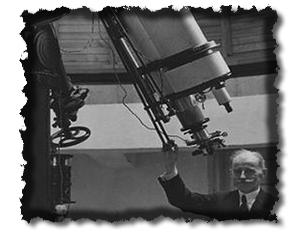
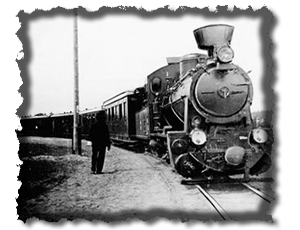 As the Second Republic of Poland was being born, it quickly became obvious that the builders of Polish statehood had to contend with not only the problem of defending the newly-attained independence of their homeland, but also the problem of uniting the geographic regions, diverse in many ways, into one economic entity. Each of the provinces was at varying levels of economic development, had different currencies, and had different social and ethnic structures. In particular, there was a large disproportion in the numbers of landowners between Western and Central Poland and the Eastern Borderlands, where large industry was almost non-existent. It is important to note that some of the exiting factories and plants had been dismantled and transported east by the Russians. Other factories were destroyed during the Polish-Bolshevik War in 1920. Consequently, the Eastern Borderlands were not only proportionately less industrialized, poorer and less advanced economically; they were also impacted by war. Not only was industry affected, but so was agriculture. For example, during the war in 1920, it was not possible to cultivate more than 3.5 million hectares of land in the Eastern Borderlands. In total, 1.7 million buildings in the Polish countryside were destroyed, 75% of which were agricultural buildings. It was estimated that 456 agricultural buildings were destroyed in a part of the province of Wilno. To that, one must add the slaughter or confiscation of livestock by military units, particularly cattle and pigs. The destruction of whole areas of the countryside deprived the population of infrastructures such as drainage systems, which were indispensable to cultivation.
As the Second Republic of Poland was being born, it quickly became obvious that the builders of Polish statehood had to contend with not only the problem of defending the newly-attained independence of their homeland, but also the problem of uniting the geographic regions, diverse in many ways, into one economic entity. Each of the provinces was at varying levels of economic development, had different currencies, and had different social and ethnic structures. In particular, there was a large disproportion in the numbers of landowners between Western and Central Poland and the Eastern Borderlands, where large industry was almost non-existent. It is important to note that some of the exiting factories and plants had been dismantled and transported east by the Russians. Other factories were destroyed during the Polish-Bolshevik War in 1920. Consequently, the Eastern Borderlands were not only proportionately less industrialized, poorer and less advanced economically; they were also impacted by war. Not only was industry affected, but so was agriculture. For example, during the war in 1920, it was not possible to cultivate more than 3.5 million hectares of land in the Eastern Borderlands. In total, 1.7 million buildings in the Polish countryside were destroyed, 75% of which were agricultural buildings. It was estimated that 456 agricultural buildings were destroyed in a part of the province of Wilno. To that, one must add the slaughter or confiscation of livestock by military units, particularly cattle and pigs. The destruction of whole areas of the countryside deprived the population of infrastructures such as drainage systems, which were indispensable to cultivation.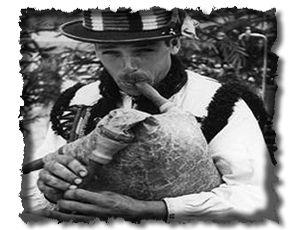
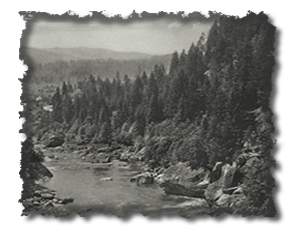 The Riga Peace Treaty, confirmed by the Ambassadors’ Council, defined the borders of the Second Republic – 25.5% of these, or 1412km, bordered Soviet Russia. The borders with Lithuania, Latvia and Romania were significantly shorter.
The Riga Peace Treaty, confirmed by the Ambassadors’ Council, defined the borders of the Second Republic – 25.5% of these, or 1412km, bordered Soviet Russia. The borders with Lithuania, Latvia and Romania were significantly shorter.
Social & Cultural Life
Much depended on the active participation of the two largest centers of the Kresy region: Lwow and Wilno. Their influence would radiate to the provincial communities. Libraries, museums, theatres, galleries, social organizations were established. But, above all, the schools of higher education allowed for an expanded knowledge of world culture in the smaller centers of the region.
The most modern form of disseminating education and culture to the widest audience at that time was radio. The first broadcast of Polish radio in the Kresy region occurred in Wilno on January 15, 1928. It broadcast at a distance of 140 km, and by 1938 it sent into the ether almost 5000 hours of broadcast time. Two years after the Wilno station was established, a second, very popular station in Lwow was activated on January 15, 1930 with similar broadcast capabilities. Few remember the fact that a newer third station was activated in July, 1938 a year before the war in Baranowicze and it broadcast a distance of 120 km. At that time in the province of Nowogrod there were 11 radios for a population of 1000. The province of Wilno had 26 radios and the province of Lvov had 28 radios as compared to the national average of 29 radios. Unfortunately, the radio station in Luck was still under construction when WWII started. The most popular country-wide satirical show was “Funny Radio Waves From Lwow”. Other popular radio programs were “Our Eye”, “Happy Sunday,” “Ta-joj,” and “City Hall Conversations with the Lions.” Kresy radio stations broadcast satirical, sport and musical programs similar to current broadcasts, as well as foreign programs. Author interviews from Lwow and Wilno were broadcast nationwide.
The Press was particularly important to this mass mandate. In 1937 there were 163 periodicals in the Kresy provinces, of which 17 were dailies and 29 were weeklies. This was minimal in comparison to the western provinces where 609 titles were published, of which there were 62 dailies and 128 weeklies. The most important was Wilno’s “Slowo” appearing from 1811. Also important was “Gazeta Lwowska” published in Lwow from 1894 – 1934 and “Slowo Polskie,” “Gazeta Codzienna” (1908-1939), “Dziennik Ludowy,” “Kurier Lwowski,” “Wiek Nowy” and the nationally syndicated “Chwila” (1919-1939). Both Lwow and Wilno editions of “Rzeczpospolitej” were available. In Grodno there was also the publication “Echo Grodzienskie”.
Popular pre-war amusements were movie theatres. In 1929 there were 727 movie theatres in the Second Polish Republic. In the provinces Lwow had 63, Wilno 17, Wolyn 23 and there were only 9 in Poleski. Not all of them had sound capabilities. Three years before the war 69 of the 75 movie theatres in Lwow province had sound capabilities. By 1939 there were no remaining silent movie theatres in the Kresy area.
In the short period of the evolution of the Second Polish Republic many museums were either opened or expanded in the Kresy area. In April 1939, 48 museums existed in the Kresy provinces, of which 17 were in Lwow (in comparison Warsaw had 30.) There were 26 museums in the vicinity of Lwow province. That number includes 4 museums in Wilno and 1 in the entire Poleskie area. Nowogrod province had 3 museums, Wolyn 5, Stanislawow 3 and Tarnopol 6. The biggest and most popular belonged to Lwow. There was the “Galeria Narodowa” of the city of Lwow, “The Museum Dzieduszyckich” found in the eastern marketplace, “The Panorama Raclawicka,” “The Historical Museum of the City of Lwow”, “The Lubomirski Museum,” “The King John III national museum” and also in Wilno “The Museum of the Organization of Friends of Education.”
Whoever wanted to read Polish could take advantage of books in the self-serve libraries and popular reading rooms run by social organizations. Of the pre-1939 libraries established in Lwow province, where there were 15 permanent ones and 28 mobile ones. In Wilno there were significantly more, 79 permanent libraries and 485 mobile ones; similarly in Nowogrod there were 69 permanent ones and 651 mobile ones. There were fewer self-governing libraries in the southern Kresy region compared to Wilno and Nowogrod. The proportion was reversed when taking into account social libraries. Lwow had 1604 permanent ones and 919 mobile ones. Similar numbers existed in Tarnopol and Stanislawow.
In addition, many theatres were founded in the Kresy region. From the moment freedom was gained, theatres grew in fame and in the consciousness of the public. Two years before WWII 503,000 tickets were sold in theatres in Lwow alone. The number in Wilno was 311,000. Decidedly fewer tickets were sold in that time period for concerts and literary readings. In Lwow that number was around 15,000.
In the countryside, there were many popular forms of entertainment: folk choirs, folk revues and light box plays. For example, in the Wilno region in 1939 there were 523 theatrical groups and 190 choirs. In the vicinity of Lwow there were 2394 light box groups, 1141 theatres and 666 folk choirs. The most famous Kresy theatre was at Pohulanka in Wilno. Located on Wielka Pohulanka street it was graced by the performances of Hanka Ordonowna, Aleksander Zelwerowicz, Igor Przegrodski, Hanka Bielicka, Danuta Szaflarska and Zbigniew Blichewicz. In the 1920’s the director was Juliusz Osterwa. He arrived with his review “Reduta” in 1925. Similar great theatre occurred in the beautiful “Teatr Wielki” in Lwow. The stage was graced, among others, by the performance of Helena Modrzejewska and Aleksander Zabczynski. The director of the theatre from 1930 was Leon Schiller.
An important role, particularly in the Kresy region, was played by numerous public societal organizations and educational-cultural ones located in both cities and the countryside. They fulfilled functions of social life similar to that of the libraries and reading rooms. Among others they were the “Polish Maternity School,” “Society of Popular Schools”, “Society of the Workers University”, “Catholic Union of Young Females”, “Central Union of Country Youth”, “ Society of Country Youth RP Wici”, “Central Organizational Circle of Country Landlords,” Rifleman’s Union,” “Union of Young Christians,” “Polish YMCA,” “Polish Red Cross,” “Air and Anti-gas Defensive League,” “Polish Boy Scouts and Polish Girl Scouts,” “Building Society of General Schools,” “Friends of Academic Youth Society,” “Fire Fighter’s Society”. In 1936 alone there were 314 active educational societies in Poland of which 17 were in Wilno and 38 in Lwow. Some of these organizations are still active today e.g. the YMCA and Polish Scouting.
Sport was another area in which Kresy residents met each other. Kresy sport clubs had an impressive effect on the expansion of sport in the Second Polish Republic. The oldest sports club was “Pogon Lwow, founded in 1904 in conjunction with High School IV in Lwow. It functioned under the official name of “Lwow Sports Club-Pogon Lwow”. Taking into account the history of Polish soccer after “Lechii Lwow” and “Czarnych Lwow” this was the third soccer organization during the time period of the Second Polish Republic to be a four-time Polish Champion. In the 1930’s, the Army sports club named “Smigly Wilno” comprised of the Wilno Garrison Officers, was part of the Premiere Polish Soccer League. Other notable clubs were “AZS Wilno” and “AZS Lwow” known for, among other things, their very good ice hockey clubs. The most popular sport was soccer which, towards the end of the Second Polish Republic, had over124, 000 soccer players in clubs. There were also 23,000 skiers, 13,000 hand-ball players, 22,000 sport shooters and 9,000 in light athletics. Many people were part of the popular physical education Gymnasium Union “SOKOL”, which had approximately 50,000 members in almost 832 clubs within the Second Polish Republic.
The Kresy region also yielded many well-known creative writers, which we currently do not identify with either Lwow, Wilno or other Kresy locations. Among others, it is important to name Kornel Makuszynski ( 1884 – 1953 ), writer and poet born in Stryj , author of “Panna z mokra glowa”, “O Dwoch takich, co ukradli ksiezyc”, “Szatana z siodmej klasy” and “Awantury o Basie”. He did not return to a free Lwow in 1918 but settled in Warsaw, however, his writing skills were strengthened thanks to a degree in Philology at the University of Lwow and his initial editorial work in the Kresy region. Leopold Staff, born in Lwow (1878-1957) was a famous poet whose road in life was similar to Kornel Makuszynski. He belonged to the “Moda Polska” generation. His creativity earned him an iconic position in twentieth century Polish literature. He developed as a writer in Lwow thanks to the education he gained at “V Gimnazjum Klasycznym” and most of all at the University of Lwow, where he was a triple major. Leopold Staff was part of a literary group named “Planetnikow”. They met at a villa named “Zaswiecie” located near the Ossolineum in Lwow. Another famous member of the group was Jan Kasprowicz (1860-1926), dramatist and poet. Although he was born beyond the Kresy region, he is closely identified with the Lwow bohemian artist community. Born, raised and educated in Lwow was the writer Jan Parandowski (1895-1978) known for his ancient culture writings. Wilno produced a distinguished Conservative Publicist named Stanislaw Cat-Mackiewicz (1896-1966). He was the founder of the popular Wilno periodical “Slowo”. The author of “Dewajtis” and Wrzosu”, Maria Rodziewiczowna, was born in Pieniuchach na Grodzienszczyznie. A few kilometers from Kiejdan, in a shtetl, the Nobel Prize winner Czeslaw Milosz (1911-2004) was born. He was a student at the Stefan Batory University in Wilno, a poet of the Zagary group and, prior to 1939, an employee of Wilno Polish radio station. It must be noted that all of the above passed away beyond the Kresy region: Makuszynski and Kasprowicz in Zakopane, Milosz in Krakow, Parandowski in Warsaw, Rodziewiczowna in Leonowie pod Skierniewicami and Staff in Skarzysku-Kamiennej.
It is also important to mention popular actors Szczepcia and Toncia. Something must be said about the characters hidden under these pseudonyms. The first was born in Lwow as Kazimierz Wajda (1905-1955). He was a graduate of schools in Lwow and a student of the Polytechnic. Toncio Tonko was Henryk Vogelfanger (1904-1990), who was also born in Lwow and studied law at the John Kazimierz University. Both became popular because of the radio program “ Funny Radio Waves From Lwow”. They wrote scripts for Wiktor Budzynski and also for themselves. This was the first cabaret broadcast by Polish radio outside Warsaw. Their work was so excellent that it was the most popular radio program in the Second Polish Republic and was heard by six million listeners. They were also not allowed to stay in their beloved Lwow after 1945. They both passed away in Warsaw. It is interesting to note that many important Polish cultural figures were educated at the “III Gimnazjum Meskiego im. Stefan Batory” located directly across from the Lwow Polish Radio Station.
Among the many famous creative individuals born in Lwow was the poet and dramatist Zbigniew Herbert (1924-1998), poet Adam Zagajewski (1945- ), writer and satirist Janusz Wasylkowski (1933- ), actor and director Adam Hanuszkiewicz ( 1924- ), director Jerzy Passendorfer (1923-2003), actor Ryszard Ronczewski (1930- ), poet Teodor Bujnicki (1907-1944), violinist Jascha Heifetz (1901-1987). Born in other Kresy areas: director Jerzy Kawalerowicz (1922-2007) born in Gwozdzcu in the vicinity of Kolomyi, director Jerzy Janicki (1928-2007) born in podoskim Czortkowie, and the popular actor Zygmunt Kestowicz (1921-2007) from the Wilno region.
At the end of WWII Poland lost the Kresy region, with its abundance of culture manifested in its museums, theatres, and libraries. Yet, in spite of this cataclysm, thousands of creative individuals raised and educated in the Kresy region were saved and subsequently introduced in post-war Poland; this is an immeasurable gift to the benefit of the country. For many years, in spite of domestic difficulties and overwhelming poverty, Polish nationalism has been maintained by the Poles living in the pre-war Kresy areas, where theatres, clubs, libraries, groups, etc. have remained locations for maintaining Polish heritage. These accomplishments are still visible today.